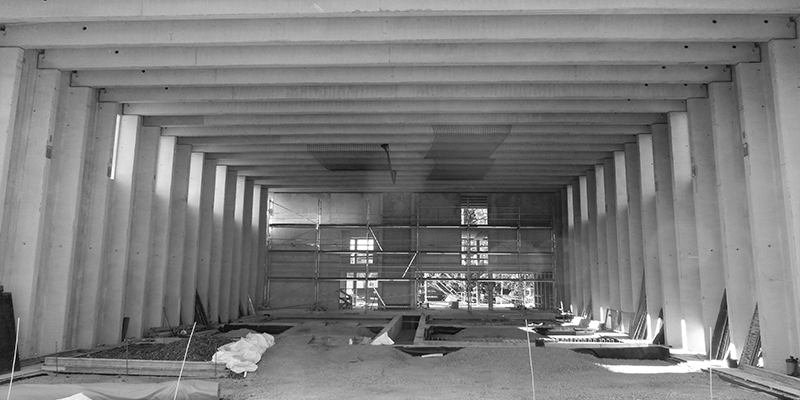Downloads
DOI:
https://doi.org/10.7480/jfde.2015.3-4.984Keywords:
Facade element, micro-reinforced UHPC, mineralized protein foam concrete, energy efficiency, thermal insulation, energy management, energy activationAbstract
Today, an increase of the energy efficiency in the industry is typically achieved by separate, parallel measures, primarily on the level of the individual machines. Energy efficiency can be improved by a holistic, integrated approach, which links the machines, the production process, the technical infrastructure and the building and its envelope.
The subject of this paper is the development of a new prefabricated element for façades and roofs, which was developed and built in the context of a research project called eta-Fabrik (i.e. energy-efficient factory, www.eta-fabrik.de) at TU Darmstadt, Germany. The element consists of purely mineral materials (concrete) and can be energetically activated by capillary tubes integrated in the surface layer. This surface layer consists of a micro-reinforced, ultra-high-performance concrete (mrUHPC) to achieve a low component thickness due to its high mechanical capacity, resistance against thermal changes, surface quality and low permeability. The core of the element is responsible for insulation. For this, a mineralized protein foam (MF) is used. It provides very good thermal insulation properties due to its eminently low density allowing low heat transfer coefficients. The final façade element thus combines limiting, bearing, insulating and thermal activation using concrete.
How to Cite
Published
Issue
Section
License
Copyright (c) 2016 Andreas Maier

This work is licensed under a Creative Commons Attribution 4.0 International License.
Authors or their institutions retain copyright to their publications without restrictions.
References
Abele, E. (2012). Skizze des Forschungsprojektes η-Fabrik. TU Darmstadt.
Beka Heiz- und Kühlmatten GmbH (2013). BEKA CD-ROM. Produktordner und Berechnungsprogramme, p. 15.
Bundesministerium für Wirtschaft und Technologie (2005). Innovation und neue Energietechnologien. Das 5. Energieforschungsrahmenprogramm der Bundesregierung.
Herrmann, C., Kara, S., Thiede, S., & Luger, T. (2010). Energy Efficiency in Manufacturing – Perspectives from Australia and Europe. In: Proceedings of the 17th CIRP International Conference on Life Cycle Engineering (LCE2010), Hefei, China (pp. 23-28).
Landau, K., Helbig, R., & Ferreira, Y. (2005). Ergonomie am Arbeitsplatz. In J. Eisele, & B. Staniek (Eds.), Bürobau Atlas, Grundlagen/Planung/Technologie/Arbeitsplatzqualitäten, (pp. 208-217). Callwey-Verlag (Hrsg.).
Reineck, K.-H., & Greiner, S. (2004). Dichte Heißwasser-Wärmespeicher aus ultrahochfestem Faserfeinkornbeton. Forschungsbericht zum BMBF-Vorhaben 0329606 V, p. 82. Institut für LeichtbauEntwerfen und Konstruieren (ILEK), Universität Stuttgart.
Thumm, F. (2013). Simulation zur Bestimmung des Energiebedarfs der Halle. TU Darmstadt, 2013.
